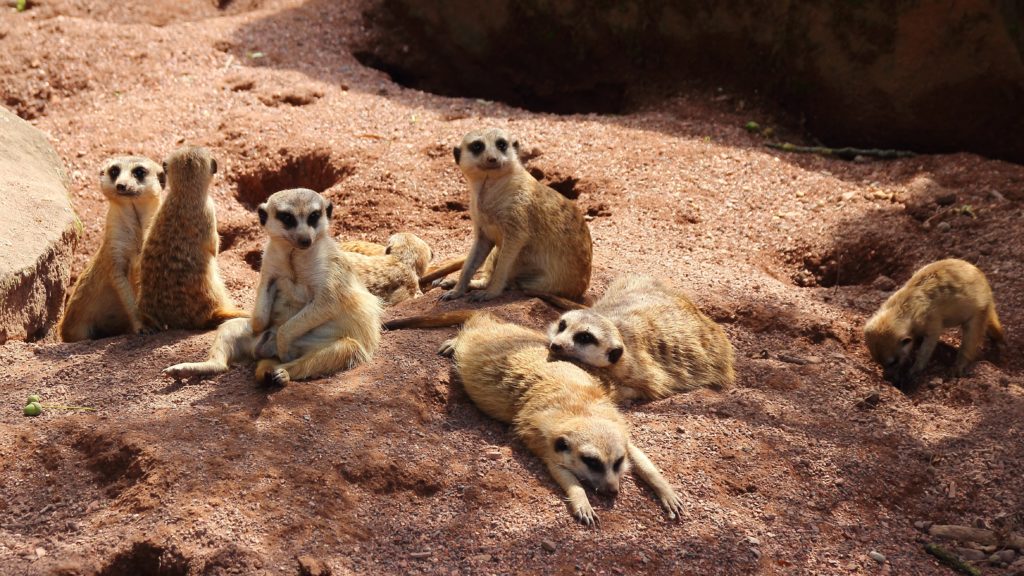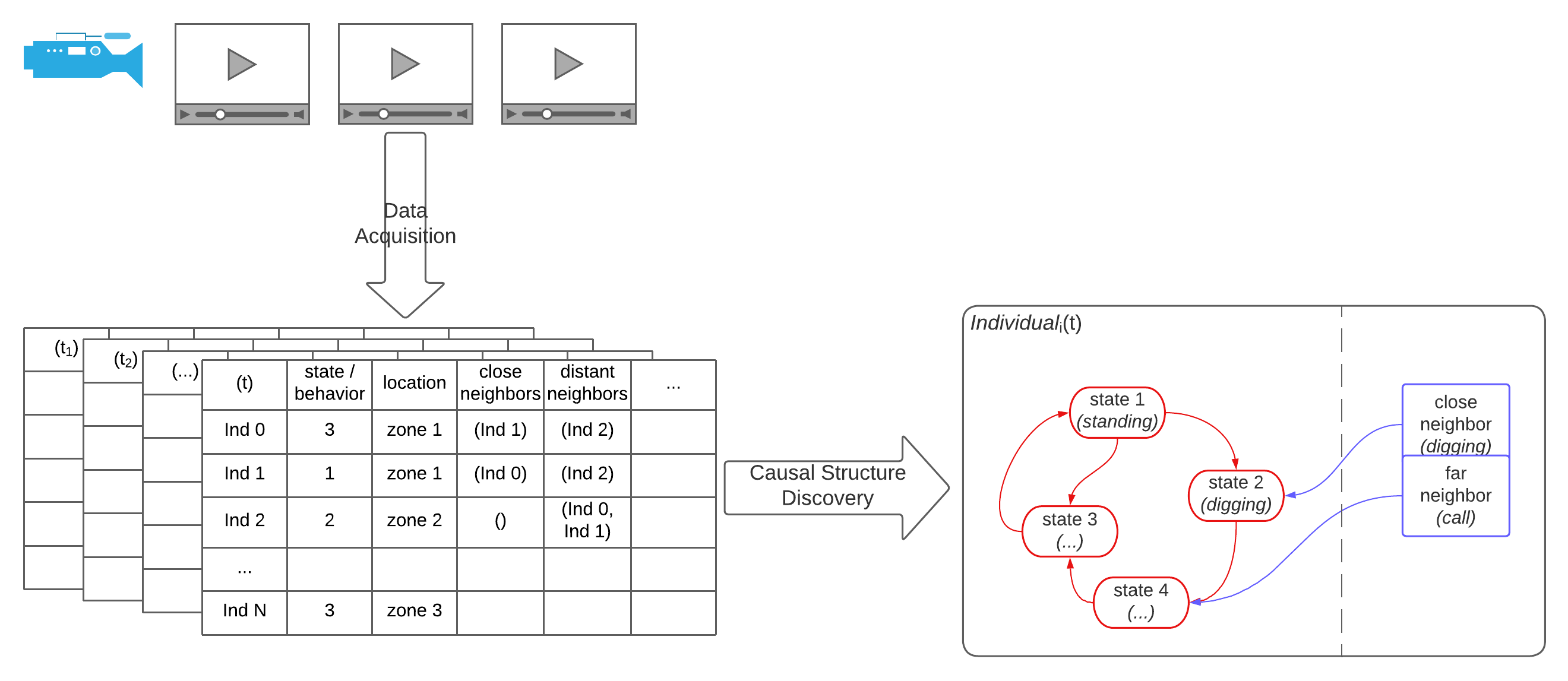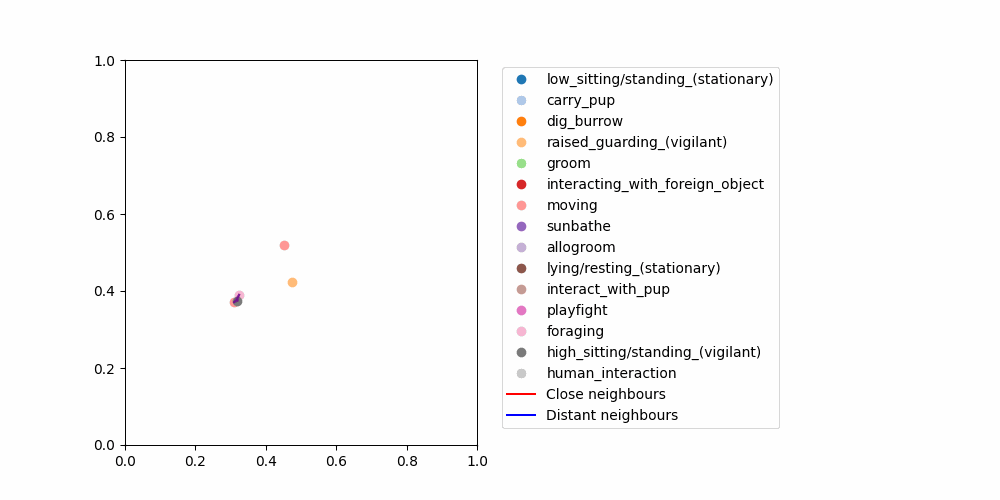Behaviour Modelling of Social Agents

Overview
This project focuses on modelling the behaviours of natural social agents (e.g. a mob of meerkats) and representing their inner cognitive models as complex causal graphs. We propose to discover the causal structure of the agents’ behaviours from data and combine it with a graph neural network (GNN) to model information propagation in an action network. Our approach showed better efficiency than other neural-based methods, while also being more interpretable.

Key Takeaways
Dataset As part of this project, we collected a large dataset of annotated meerkat behaviours, which is the first of its kind. We released the dataset publicly.
Causal Structure Discovery We propose an interpretable method for modelling and predicting the behaviours of social agents using causal structure discovery and graph neural networks (technical details can be found in the paper).
Experiments We apply our method over a group of meerkats from the Wellington zoo and show that our proposed pipeline competes with standard architectures while being more efficient and interpretable, outperforming them in low information settings.
Simulation We also show that our method can be used to simulate the behaviours of social agents over time, yielding more realistic behavioural sequences than methods based only on neural networks.

Future Directions
This work has any applications, ranging from animal welfare to robotics or the understanding of human social structures. We are currently expanding this work to other social agents and modelling dynamics as well as behaviours. We hope that this work can lead to interpretable and robust models able to simulate social agents in counterfactual settings, discover their underlying ethical principles, their reward functions, or predict dangerous patterns.